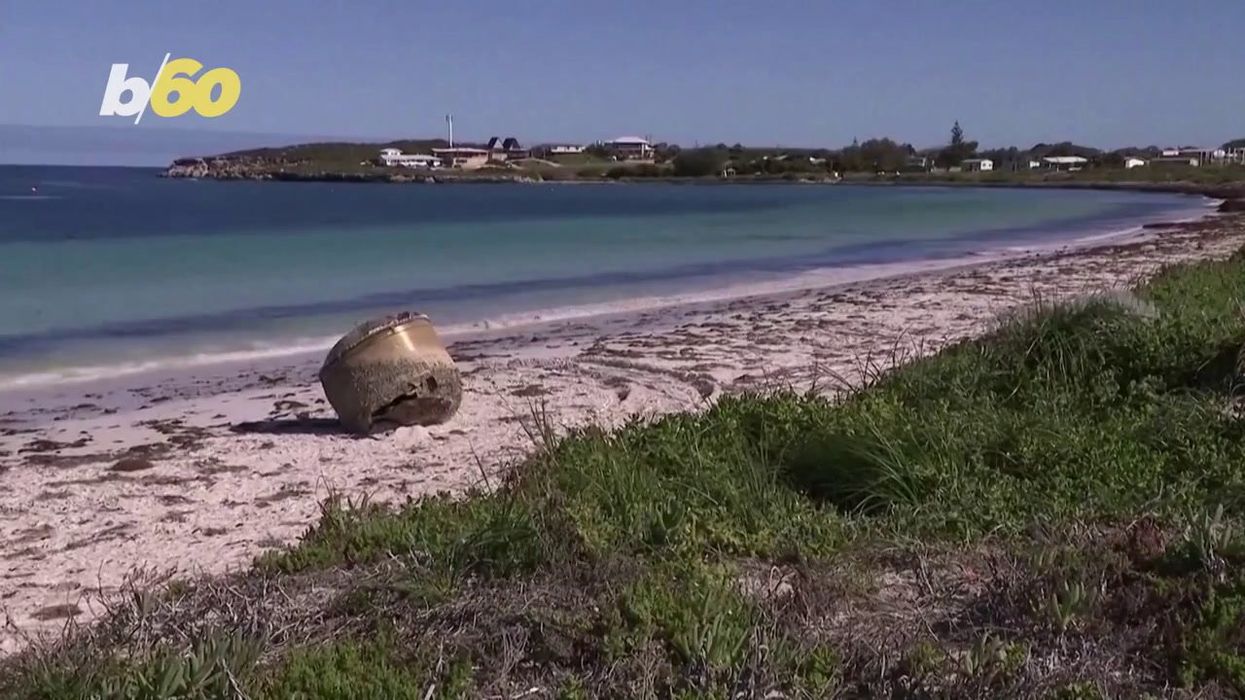Science & Tech
Harriet Brewis
Jul 18, 2023
Mystery Cylinder Washes Up On Australian Beach
content.jwplatform.com
A huge metal object has been found washed up on a remote beach in Western Australia, and officials are scrabbling to work out what it is and where it came from.
The mysterious barnacle-covered beast was discovered on Sunday by baffled locals on the white sands near the coastal town of Jurien Bay, 220km north of Perth.
The copper-coloured cylinder appears to be human-made and measures about 2.5m wide and nearly 3m long, ScienceAlert reports.
It is visibly damaged, with the bottom half looking as though it was ripped from another body, and inevitably, speculation has been raging as to its origin.
Sign up for our free Indy100 weekly newsletter
Police immediately dismissed any suggestion that it may have come from the doomed MH370 flight, which vanished as it travelled from Kuala Lumpur to Beijing in March 2014.
In fact, the WA force confirmed that they didn’t believe it was part of a commercial aircraft and stressed that they’d be treating it as hazardous until they could establish its identity.
“The investigation is ongoing, and until further information is available, we urge everyone to refrain from drawing conclusions,” they said in a statement published on Monday night.
“In order to maintain the integrity of the investigation, officers from the Western Australia Police Force are currently guarding the object.
“This measure has been taken to ensure the preservation of potential evidence and facilitate further expert examination.”
Meanwhile, the Australian Space Agency announced that it was also involved in the investigations.
“The agency is working to confirm whether the object could be part of a foreign space launch vehicle that has washed up on shore, and liaising with global counterparts who may be able to provide information about the object,” it said in a tweet.
“As the origin of the object is unknown, the community should avoid handling or attempting to move the object.”
Still, despite the authorities’ best efforts, people have been flocking to catch a glimpse of the unidentified floundering object, with commentators quick to offer their theories on social media.
The general consensus is that it came from the third stage of India’s polar satellite launch vehicle (PSLV) rocket.
Indeed, Indian media have confirmed this idea, with the Indian Defence Research Wing pointing out: “During a typical PSLV launch, the rocket goes through several stages, and as it gains altitude, each stage separates and falls back to Earth.
“While the first two stages are usually set to safely re-enter Earth’s atmosphere over remote oceanic regions, the third stage is often directed to splash down near Australia.”
The news site noted that one of the most “intriguing” aspects of the discovery was the number of barnacles that covered its surface.
“Barnacle attachment is a gradual process that takes place over time,” it reported. “Studies show that it typically takes place anywhere between three weeks to two months for barnacles to adhere to a submerged surface.
“Considering the advanced state of barnacle attachment on the PSLV stage, it indicates that the object has been floating in the ocean for a considerable duration.”
Elsewhere, Dr Alice Gorman, an expert in the field of space archaeology, told The Guardian the finding was particularly “surprising” because “it’s such a large fragment.”
“It makes you wonder what was going on at the time, if maybe a marine weather event dislodged it and brought it ashore,” she said.
“It is very interesting though, and is a way regular everyday people can get close to space, as often these things turn into souvenirs. People like to keep some space junk.”
Gorman also told the paper that police were right to turn members of the public away from the site, saying the cylinder likely contained toxic materials.
“A lot of rocket fuel is actually quite toxic, even though this one’s been around for a while, and clearly it hasn’t killed off any of the things growing on it, that precaution is justified – a lot of rocket fuels are not very friendly to living things.”
The expert said she believes the object likely fell from a launch in the past decade, and that it was most probably now full of “dirt and sand”.
She said the authorities would now have to confirm its true country of origin and return it there, as per the UN’s Outer Space Treaty.
Have your say in our news democracy. Click the upvote icon at the top of the page to help raise this article through the indy100 rankings.
Top 100
The Conversation (0)













